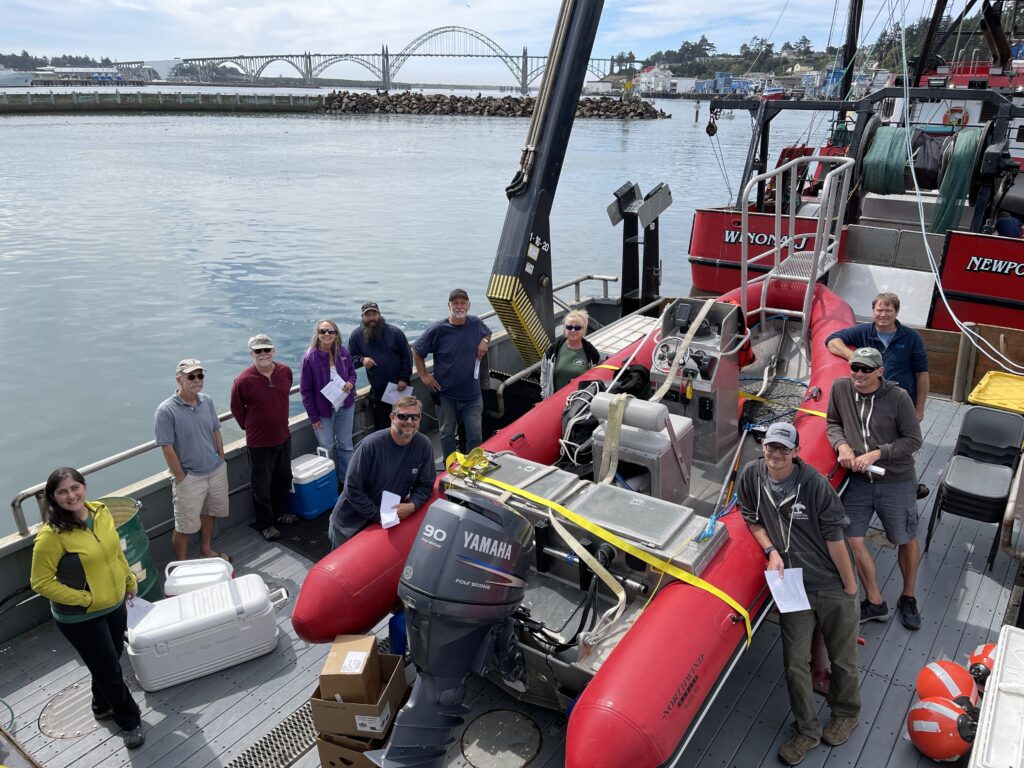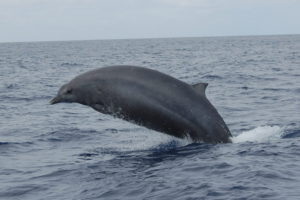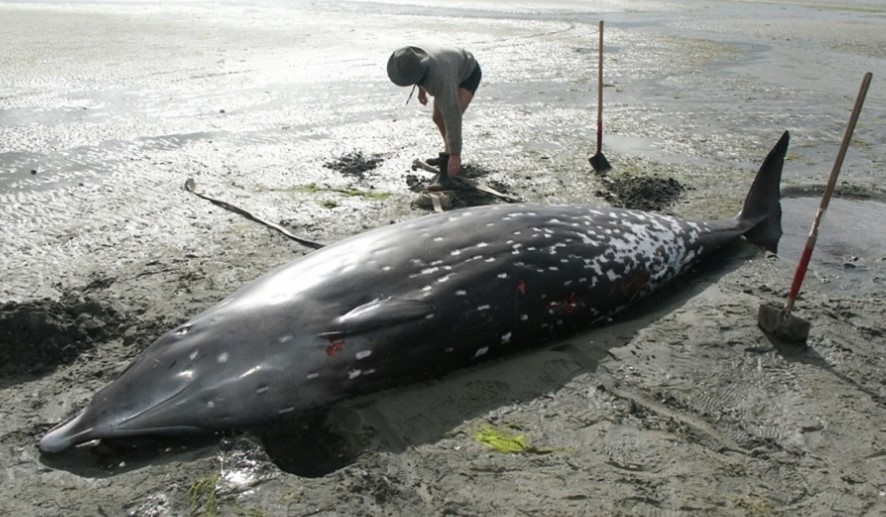
By DANA TIMS/YachatsNews.com
NEWPORT — In the inky darkness a couple hundred miles off the Oregon coast, Lisa Ballance slept soundly as the research expedition she led sailed toward Hawaii in search of a species of whale never before identified alive in the wild.
Then, just after 4:30 a.m., Ballance awoke with a start when the constant thrum of the vessel’s engine suddenly went quiet. Her first elated thought was that the ship’s crew had picked up the chatter of their target, a beaked whale, on one of the acoustic devices towing behind the craft and cut the engine to listen.
No such luck. Instead, the boat’s transmission had slipped out of forward gear, bringing the R/V Pacific Storm to a halt. The crew eventually made a manual override, but the risk of heading on was deemed too great.

“At that moment, we were all profoundly disappointed,” Ballance, who directs Oregon State University’s Marine Mammal Institute in Newport, said in a telephone interview Wednesday. “But the only responsible thing to do was turn around and head back to Newport to make sure we got things fixed properly.”
That all happened Sept. 7, three days after the boat chugged out to sea. Now, with repairs completed, the 12-person scientific expedition and crew will head back out at first light Thursday.
Projections of stormy weather, however, have forced Ballance to change the mission dramatically. Initial plans to reach a huge garbage patch midway between Oregon and Hawaii – an area where beaked whales are thought to congregate to feed on various species of squid – have been tabled for another day.
Still, a truncated search for what Ballance calls “the cryptic beaked whale” is on. And with it, she hopes, is a chance to still make scientific history.

“If we are able to sight and identify a whale that has never been seen alive, that will be huge,” she said. “That would be news that will be meaningful at a global scale for scientists who study marine mammals.”
An important piece of the expedition lies in trying to fill in the blanks about what is not known about beaked whales. Little is known, for instance, about their overall numbers and where, exactly, they tend to reside in the ocean.
Scientists know they generally prefer extreme depths, but also that an increasingly noisy ocean – a cacophony produced by scientific seismic testing, oil exploration and military use of high-intensity sonar to detect submarines – can frighten beaked whales. This flight response triggers a race to the surface, which can result in bends-like symptoms and death.
Ballance, in a blog post, said her expedition “hopes to provide essential information to better understand the population status of beaked whales around the world and to assess their vulnerabilities to anthropogenic (human-caused) sounds.
Despite the mechanical failure and early return to port, the mission has already borne fruit, Ballance said. Taking advantage of calm, flat waters on the way back in, scientists aboard the craft had several close encounters with a Baird’s beaked whale, a species that has been seen before, but maybe never this clearly or so close.
“We got some great photographs and some extraordinary recordings of their vocalizations,” she said. “Those will now form the basis of a scientific paper we’re working on now.”
Of the 16 known species of beaked whales, there are six that have been described solely based on dead animals washing ashore, Ballance said. One or more could be living in water off the Oregon coast.
So under a retooled mission, the vessel will do a quick out-and-back Thursday to a point about 60 miles off the coast. There, two acoustic listening devices, specifically set to pick up beaked whale sounds, will be deployed on free-floating buoys.
Then, weather permitting, the boat will spend the rest of September motoring up and down the Oregon coast, anywhere from 150 to 250 miles out, in hopes of either hearing beaked whales or sighting them on powerful binoculars.
Although small by whale standards, beaked whales can weigh up to 1.5 tons, still making them among the largest creatures on the planet.
Their name comes from the single pair of teeth male beaked whales have for fighting over females, who remain toothless. Although never witnessed, these battles must be intense given the deep gouges that have been found on the skin of washed-up beaked whales.
And if Ballance and her crew have anything to say about it, they’re going to find a live, swimming species yet.
“It’s a very exciting scientific endeavor with significant outcomes in a host of different contexts,” she said. “It’s not over, for sure.”
- You can follow the expedition’s work via a special website here.



